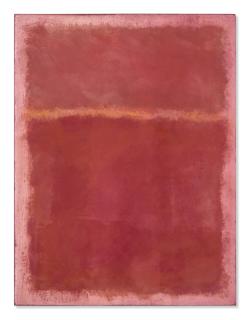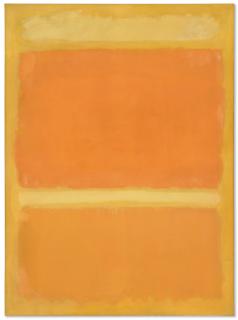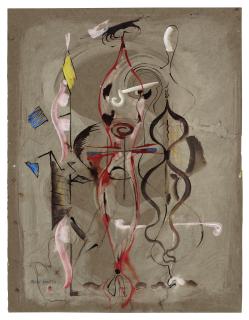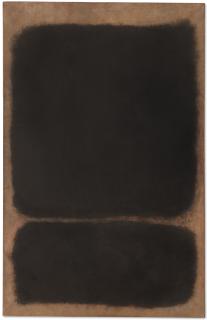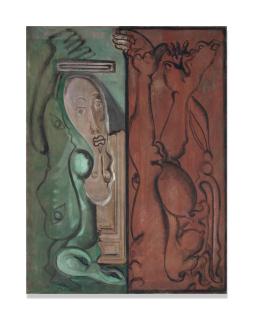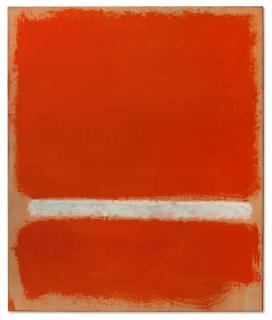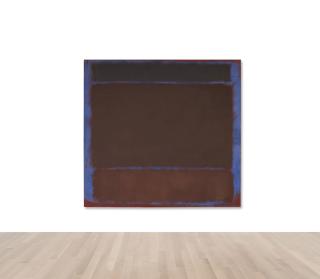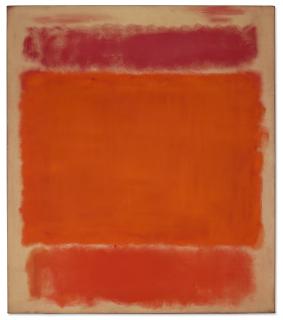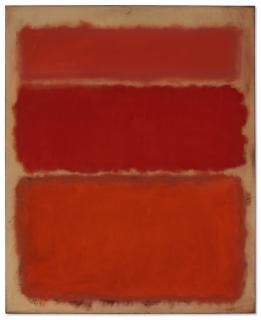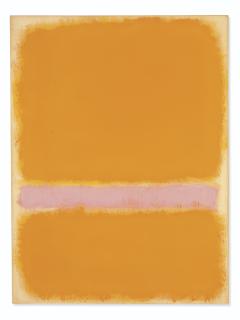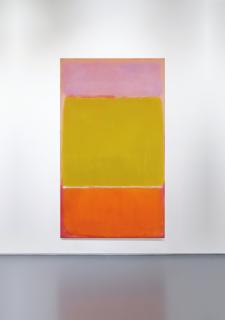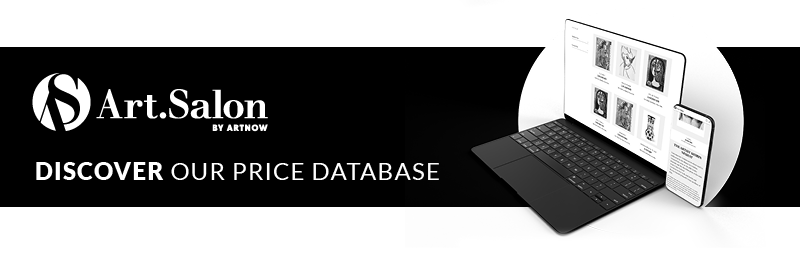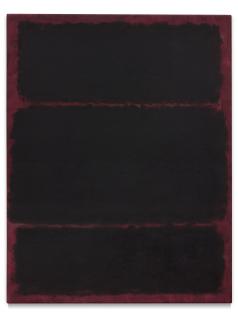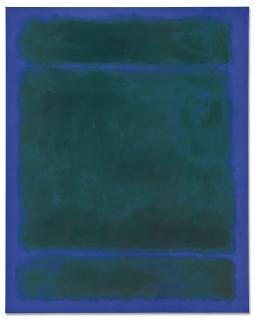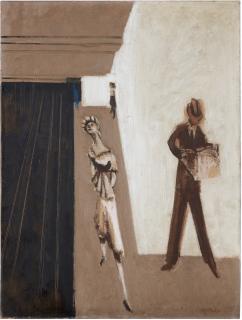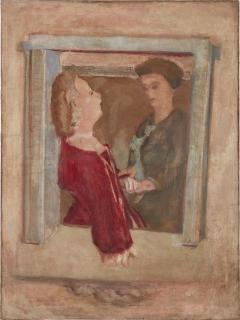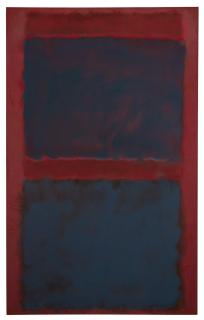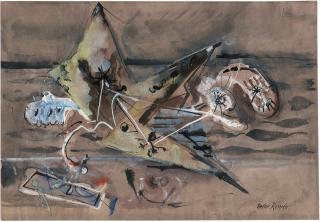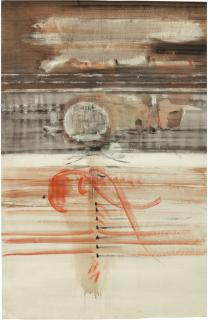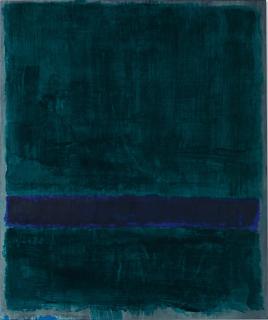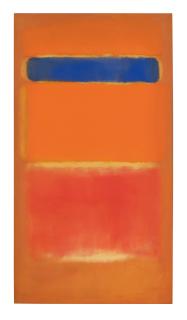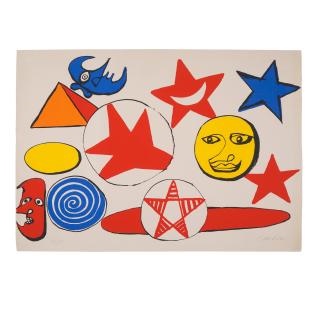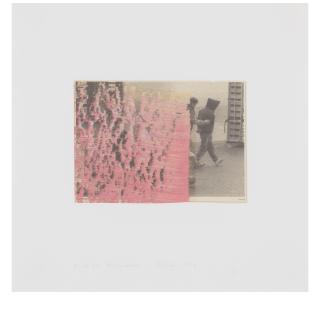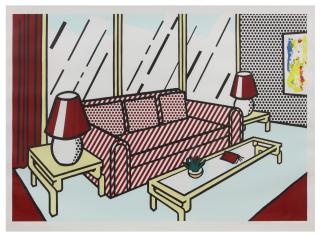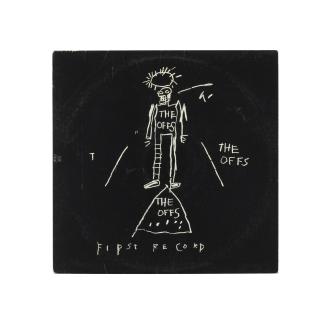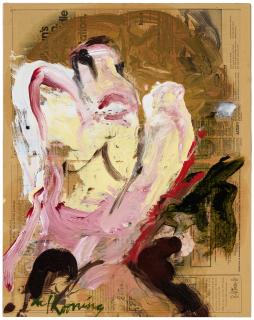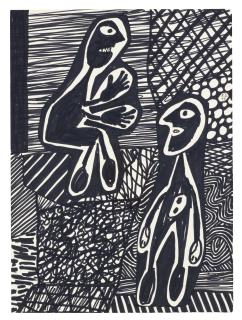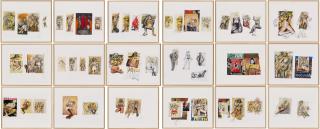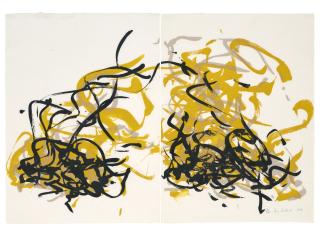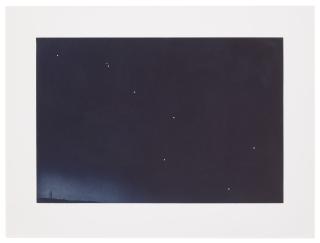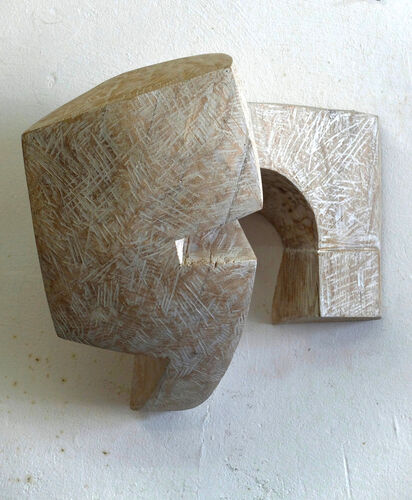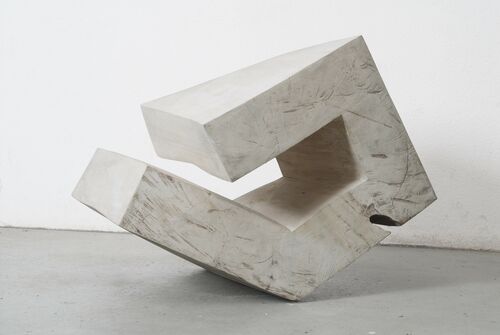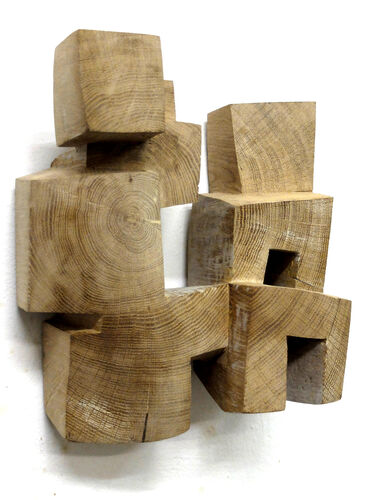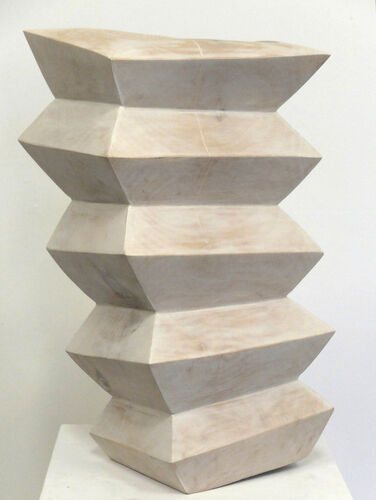Mark Rothko Daugavpils, Latvia 1903 - 1970 New York City
The artist Mark Rothko
- Pioneer of Abstract Expressionism and color field painting.
- The viewer-image relationship was a major concern for him.
- Suffered probably from a bipolar affect disorder and took his own life in 1970.
Mark Rothko is considered a pioneer of Abstract Expressionism and color field painting. Born in 1903 under the name Marcus Rotkovich, the artist came into the world in what is now Latvia and emigrated to the United States with his family in 1913. He initially attended Yale University in the early 1920s, but later decided not to finish his studies and instead moved to New York to take classes at the Art Students League. In 1933 he had his first solo exhibition at the Portland Museum of Art. In 1935, together with eight other artists, he founded the association The Ten (later: The Ten Who are Nine).
It was not until 1940 that he had his civil name changed to Rothko – in Latvian it was already very similar: Marks Rotko. Five years later, he had made his breakthrough on the art scene and was allowed to show his works in a solo show at Peggy Guggenheim's Art of This Century gallery in New York. Although Rothko is known today primarily for his large-scale, abstract color-field paintings, he first took his cue from European Surrealism, especially artists like Max Ernst. His greatest role model, Henri Matisse, also served as a source of inspiration for Rothko's works from his early creative phase.
His work Hommage to Matisse (1953) again clearly demonstrates his enthusiasm for the French painter. From 1949 onwards, Rothko's main work emerged – his often large-format oil paintings, consisting of blurred, monochrome areas of color, fundamentally helped shape Abstract Expressionism and, in particular, Color Field painting. For the artist himself, what mattered most was how he viewed his work. He specified how the paintings should be hung and illuminated - for example, the distance to the person viewing them should be around 45 cm in order to achieve an optimal viewer-image relationship. His focus and at the same time urgent concern was always on the color effect.
From the retrospective, it is assumed today that Rothko must have suffered from a bipolar affective disorder, which was sometimes reconstructed on the basis of the color changes during his various work phases. The painter committed suicide in his New York City studio in 1970, leaving behind an extremely valuable life's work that was later to be the subject of a lawsuit: to this day, his paintings are regularly auctioned off at prices in the millions. The sale by two friends, who were to administer the inheritance, ended his daughter after said trial.
Der Künstler Mark Rothko
- Pionier des Abstrakten Expressionismus und der Farbfeldmalerei.
- Die Betrachter-Bild-Relation war ihm ein großes Anliegen.
- Litt vermutlich an einer bipolaren Affektstörung und nahm sich 1970 das Leben.
Mark Rothko gilt als Pionier des Abstrakten Expressionismus und der Farbfeldmalerei. Der 1903 unter dem Namen Marcus Rotkovich geborene Künstler kam im heutigen Lettland auf die Welt und wanderte 1913 mit seiner Familie in die Vereinigten Staaten aus. Er besuchte zu Beginn der 1920er Jahre zunächst die Yale University, entschied sich später allerdings dazu, sein Studium nicht zu beenden und stattdessen nach New York zu ziehen, um dort Unterricht an der Art Students League zu nehmen. 1933 folgte bereits seine erste Einzelausstellung im Portland Museum of Art. 1935 gründete er gemeinsam mit acht weiteren Künstlern die Vereinigung The Ten (später: The Ten Who are Nine).
Erst 1940 ließ er seinen bürgerlichen Namen in Rothko ändern – auf Lettisch lautete dieser ohnehin bereits sehr ähnlich: Marks Rotko. Fünf Jahre später hatte er den Durchbruch in der Kunstszene geschafft und durfte seine Werke in einer Einzelschau in Peggy Guggenheims Galerie Art of This Century in New York zeigen. Obwohl Rothko heute vorwiegend für seine großformatigen, abstrakten Farbfeldgemälde bekannt ist, orientierte er sich zuerst am europäischen Surrealismus, vor allem an Künstlern wie Max Ernst. Sein größtes Vorbild, Henri Matisse, diente ebenfalls als Inspirationsquelle für Rothkos Werke aus seiner frühen Schaffensphase.
Seine Arbeit Hommage to Matisse (1953) führt seine Begeisterung für den französischen Maler noch einmal deutlich vor Augen. Ab 1949 entstand Rothkos Hauptwerk – seine oft großformatigen Ölgemälde, bestehend aus unscharfen, monochromen Farbflächen, formten den Abstrakten Expressionismus und insbesondere die Farbfeldmalerei grundlegend mit. Für den Künstler selbst war vor allem die Betrachtung seiner Arbeit von Bedeutung. Er gab vor, wie die Bilder gehängt und beleuchtet werden sollten – so sollte etwa die Entfernung zur betrachtenden Person um die 45 cm betragen, um eine optimale Betrachter-Bild-Relation zu erreichen. Sein Fokus und gleichzeitig dringliches Anliegen lag stets auf der Farbwirkung.
Aus der Retrospektive wird heute davon ausgegangen, dass Rothko an einer bipolaren affektiven Störung gelitten haben muss, was mitunter anhand der Farbwechsel während seiner verschiedenen Arbeitsphasen rekonstruiert wurde. Der Maler beging 1970 in seinem Atelier in New York City Suizid und hinterließ ein äußerst wertvolles Lebenswerk, um das es später noch einen Prozess geben sollte: Seine Bilder werden bis heute regelmäßig zu Preisen in Millionenöhe versteigert. Den Verkauf durch zwei Freunde, die das Erbe verwalten sollten, beendete seine Tochter nach besagtem Prozess.
Mark Rothko in a nutshell
Perhaps most notable is the emotional impact Rothko's art has on the viewer. His abstract, large-scale paintings are characterized by soft, luminous fields of color that seem to vibrate with energy. They have a way of enveloping the viewer, creating a meditative, almost spiritual atmosphere. Rothko used color not to depict specific objects or scenes, but to evoke emotions and moods. His paintings are often described as »transcendent« or »mystical«, and it is easy to see why. They seem to exist outside of time and space and invite the viewer to get lost in their ethereal beauty.
Another reason Rothko's art is so special is that it represents a break with traditional painting techniques. Rothko rejected the idea that art should be representational or figurative and instead focused on the expressive power of color and form. He sought to create art that could speak directly to the viewer's emotions without the need for narrative or symbolism.
Rothko was born Marcus Rotkovich in 1903 in Dvinsk, Russian Empire. However, the family emigrated to the United States to escape anti-Semitism in the Tsarist Empire. They had been living in America since 1913. Rothko received American citizenship in 1938 and changed his name two years later.
As a young man, Rothko produced a self-portrait that is well known today. Self Portrait from 1936 shows the artist in front of an undefined background, whose choice of color is reminiscent of flames. Rothko wears a black suit with a red tie and dark, round glasses that cover his eyes. The artist was inspired for this expressive self-portrait by Rembrandt's self-portraits. It is now in a private collection.
Orange, Red, Yellow (1961) fetched nearly $87 million at a Christie's auction in 2012, making it Rothko's most expensive painting. It is not known who purchased the painting. Following close behind are Rothko's No. 7 (1951) and No. 10 (1958), which sold at auction in 2021 for $82.5 million and $81.9 million, respectively, in 2015.
The artist committed suicide in his New York City studio on February 25, 1970. Researchers subsequently diagnosed Rothko with a manic-depressive illness, the effects of which can also be seen in the choice of colors in his oeuvre. The connection to the suicide is considered highly probable. His gravestone is located in East Marion Cemetery in New York. A few weeks later, Rothko's wife died of a heart attack.
Häufige Fragen zu Mark Rothko
Am bemerkenswertesten ist vielleicht die emotionale Wirkung, die Rothkos Kunst auf den Betrachtenden hat. Seine abstrakten, großformatigen Gemälde zeichnen sich durch weiche, leuchtende Farbfelder aus, die vor Energie zu vibrieren scheinen. Sie haben eine Art, den Betrachtenden zu umhüllen und eine meditative, fast spirituelle Atmosphäre zu schaffen. Rothko verwendete Farben nicht, um bestimmte Gegenstände oder Szenen darzustellen, sondern um Gefühle und Stimmungen hervorzurufen. Seine Gemälde werden oft als »transzendent« oder »mystisch« beschrieben, und es ist leicht zu verstehen, warum. Sie scheinen außerhalb von Zeit und Raum zu existieren und laden den Betrachtenden ein, sich in ihrer ätherischen Schönheit zu verlieren.
Ein weiterer Grund, warum Rothkos Kunst so besonders ist, ist, dass sie einen Bruch mit den traditionellen Maltechniken darstellt. Rothko lehnte die Vorstellung ab, dass Kunst gegenständlich oder figurativ sein sollte, und konzentrierte sich stattdessen auf die Ausdruckskraft von Farbe und Form. Er wollte Kunst schaffen, die die Emotionen des Betrachtenden direkt anspricht, ohne dass es einer Erzählung oder Symbolik bedarf.
Rothko wurde 1903 in Dwinsk im Russischen Kaiserreich als Marcus Rotkovich geboren. Die Familie wanderte jedoch in die USA aus, um dem Antisemitismus im Zarenreich zu entfliehen. Seit 1913 lebten sie in Amerika. Rothko erhielt 1938 die amerikanische Staatsbürgerschaft und änderte zwei Jahre später seinen Namen.
Als junger Mann fertigte Rothko ein Selbstbildnis an, das heute wohl bekannt ist. Self Portrait von 1936 zeigt den Künstler vor einem undefinierten Hintergrund, der durch die Farbwahl an Flammen erinnern lässt. Rothko trägt einen schwarzen Anzug mit roter Krawatte und eine dunkle, runde Brille, die seine Augen verdeckt. Der Künstler ließ sich zu diesem expressiven Selbstbildnis von den Selbstporträts Rembrandts inspirieren. Es befindet sich heute in einer Privatsammlung.
Orange, Red, Yellow (1961) erzielte auf einer Auktion von Christie’s im Jahr 2012 den Wert von fast 87 Millionen US-Dollar und ist damit Rothkos teuerstes Gemälde. Wer das Bild erwarb, ist nicht bekannt. Dicht dahinter folgen Rothkos No. 7 (1951) und No. 10 (1958), die 2021 für 82,5 Millionen beziehungsweise 2015 für 81,9 Millionen US-Dollar versteigert wurden.
Der Künstler beging am 25. Februar 1970 in seinem Atelier in New York City Suizid. Forschende stellten bei Rothko nachträglich eine manisch-depressive Erkrankung fest, deren Auswirkungen sich auch in der Farbwahl im Œuvre erkennen lässt. Der Zusammenhang zum Suizid gilt als höchstwahrscheinlich. Sein Grabstein befindet sich auf dem East Marion Cemetery in New York. Wenige Wochen später starb Rothkos Ehefrau an einem Herzinfarkt.
Mark Rothko quotes
Zitate von Mark Rothko
Mark Rothko in News and Exhibitions
A new perspective on Mark Rothko
Few know about the small-scale paintings on paper made by the famous Mark Rothko. Beginning Nov. 19, the National Gallery of Art in Washington, D. C., is shining a light on rarely noticed works by the painter in Mark Rothko: Paintings on Paper.
Mark Rothko in News and Exhibitions
Eine neue Sicht auf Mark Rothko
Nur wenige wissen von den kleinformatigen Malereien auf Papier, die der berühmte Mark Rothko angefertigt hat. Die National Gallery of Art in Washington, D. C. wirft ab dem 19. November in Mark Rothko: Paintings on Paper ein Licht auf selten beachtete Werke des Malers.

